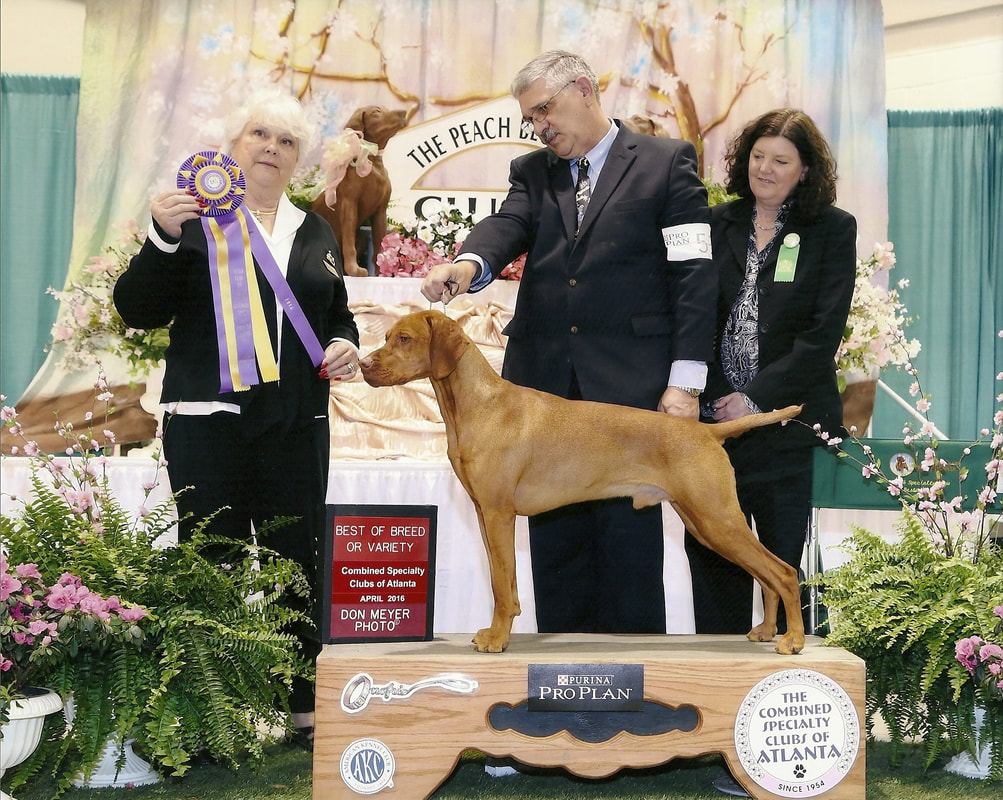From Excellent To Poor: What’s Your Take On Rating The Not too long ago I was having a conversation with someone that has been in our sport for a little less than five years. During our conversation, I was asked “What are some of the differences between AKC shows and those in other countries?” This was a good question and after our discussion and later in the day I thought further about the question and it recalled the often-mentioned question in social media posts about the judges providing critiques and similar questions as to
rating exhibits. Like a great number of judges, I have had the honor to officiate at numerous shows outside of the United States and under rules very different than those of the AKC. The privilege of being invited is always appreciated and the opportunity to see, evaluate and experience the dogs and the various cultures around the world have been wonderful and amazing learning experiences. One thing that all countries and systems have in common is their love of the sport of pure-bred dogs. Another is they are all very passionate about their dogs and like all of us the exhibitors want to win. One of the biggest differences I have experienced outside the AKC method of judging is that in many countries the judge does give some type of evaluation to each exhibit he may award. The evaluations may be detailed and written or a very simple verbal one-word evaluation. The judge will evaluate the dogs with some variation of the following rating, Excellent, Very Good, Good, Fair, or poor. One thing I learned the hard way about this system is that if the judge does not say “Excellent” the dog does not win any points. The very first time I judged out of the country I was doing a specialty and awarded the points to a dog and I said “very good” which in my opinion was an accurate description of the dog in front of me. The exhibit was exactly that in my opinion, above average in many ways with a few areas for improvement but very much deserving of the win. I quickly learned that by not saying “Excellent” this very worthy specimen would not receive any points for the win. I was devastated! I also learned a very valuable lesson that day, “be sure you understand the system before you walk into the ring”. When judging outside of the AKC system most countries use different systems and procedures. Often in numerous cases the breed standards themselves may differ from country to country so it is important to review the individual standard for the breed in the country in which you will be officiating. Many countries and I believe all FCI countries use a rating system whereby the winning dog must be rated excellent to receive the points or certificate. For me this is a very difficult application to understand and apply fairly in the evaluation process of judging dogs. In my over 34 years of judging I have seen many, many, good to very good specimens of their breed. Something I am sure many judges will agree with me on is there are very, very, few dogs that in my opinion reach the level of near perfection and a rating of “excellent”. When I think about the early history of our sport not only here in the States but also around the globe, I believe there was a time when “Excellent” was indeed the proper term. When you look back at the early history of our sport the shows started as a way for the breeders and stockmen of the times to get together for the comparison and evaluation of their breeding stock. At that time these people were truly trying to improve their stock while learning from one another. Those early shows were not as defined by classes, breed, groups, and Best in Show at the same level they are today. The early shows were smaller but there were larger entries in specific breeds so rating the winner as excellent was probably accurate for those times. However, times change and sometimes people are not willing to change with them. The very word “excellent” to me describes superiority, first-class, the best of the best, perfection, and so on. When I put that in the context of judging dogs, I would say it means extremely close to exemplifying the standard for the breed. I wonder how many exhibits really fit that category? Understanding the term “Beauty is in the eye of the beholder” I am sure it will vary amongst all of us. What I do believe is that there are a great number of specimens that most agree are in the Very Good and Good categories and display the proper type, soundness and presentation to showcase their breed to a high standard. As judges we often see exhibits that are truly above average and very deserving of their wins and going on to become Champions. These specimens on any given day can compete in the show ring while also contributing to the future of the breed in a breeding program. Most of the time they have numerous virtues as called for in the standard, but many also have an area or two of weaknesses that needs improvement. After all, as breeders we should be working toward the perfect example of our breed, and correcting these faults is part of the process of achieving our goals. I think that rating a dog good to very good by any judge would make most breeders and exhibitors happy. I also believe it is a more honest evaluation of the specimens being presented. When I have asked “why must they be rated excellent to get the points?” the reply is usually “that’s just the way it’s always been”. I think the FCI and those countries that use this evaluation are not doing the breeders especially the newer ones any favors. Think about it. If you were new to the sport and were just told your dog was “excellent” would you find it necessary to try to improve on it? Would you expect to win all the time? After all Excellent is the best of the best. Or would you rather get an honest and fair evaluation of your exhibit? What will the reaction be when at the next show the judge just says “Good” for the same exhibit? Which judge was right? In most of the countries I have visited overall sportsmanship is outstanding and most judges and fellow exhibitors are treated with respect and honor. On the very rare occasion when I have witnessed an unhappy exhibitor it is when they do not hear the word “excellent” when evaluating their dog. In a few cases I have had the handler just take the dog and leave the ring because they were unhappy with a rating of good or very good and therefore understood they would not be winning any points. If the rating system was accurate and the winners could still receive the points without needing to be rated excellent many a breeder or exhibitor might look closer at their dogs and their individual breeding program and work toward improvement. I cannot imagine how today’s AKC exhibitors and handlers would react if the judge had to say “excellent” to be awarded the points and they heard good or very good from the judge. Wow! Just imagine the reactions on the internet and Facebook being stated about the judges. As judges there are rare occasions (thankfully very few) that the judge may withhold first place, winners or reserve or even the breed. These situations are difficult judgement calls that must be made at that moment and dictated by what they see in front of them. In some case an immature exhibit or a poorly groomed and out of condition specimen may be presented and although on that day may not deserve the win it is possible that at a later date with maturity and hard work along with proper conditioning it may develop into a deserving specimen. There are also those occasions when the exhibit is just having a bad day. I had a class of two sporting dogs earlier this year in which I withheld the first-place ribbon. Both dogs were worthy representatives of their breed but both dogs failed to ever bring their tails up from between their legs. I explained to the handlers that I was withholding first place because they were exhibiting a breed in which guns were to be shot over while working out in the field and doing the job for which they were bred. The tucked tails were signs of temperament instability and that the standard itself stated the tail should be carried a certain way while moving and never tucked. These two handlers were thankfully gracious with accepting my decision and I am sure worked hard to correct the issues with their exhibits. We all know the judging and evaluating of our dogs is fluid. Although the standard is the same for the breed the application and understanding varies greatly not only among the breeders themselves but also the judges that evaluate them. I do not see where requiring rating these dogs on any scale let alone using the statement “Excellent” helps anyone in the evaluation process. In theory I understand that the term may be appointed to signify that the judge believes it to be the best that day and deserving. But I also think a “good” or “very good” sends the same message. I am sure what I have written here may not be taken as I intend it by some of my many friends and fellow judges that are from within the FCI system. I am just trying to share my own thoughts on the message the word “Excellent” sends to the exhibitor. As I stated earlier there will still be that special exhibit that comes along every so often that deserves that accolade, but I do believe Good to very Good more adequately describes what we see in the ring on a regular basis. What do you think?
0 Comments
Leave a Reply. |
wALTER jSOMMERFELT |


 RSS Feed
RSS Feed